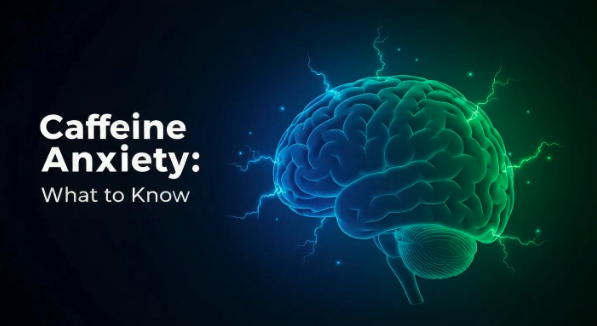The connection between anxiety and mental health disorders
Unraveling the Interplay Between Anxiety and Mental Health Disorders

Understanding Anxiety and Its Role in Mental Well-Being
Anxiety is a common emotional response to stress, but when it becomes excessive, persistent, and interferes with daily routines, it transforms into a mental health disorder. This article explores the intricate relationship between anxiety and various mental health conditions, delving into their symptoms, causes, neurobiological mechanisms, associated disorders, and treatment options. By comprehending these connections, we aim to shed light on the importance of early diagnosis, comprehensive treatment, and ongoing research to improve mental health outcomes.
Defining Anxiety Disorders and Their Symptoms

What are anxiety disorders, and what symptoms do they include?
Anxiety disorders encompass a group of mental health conditions marked by intense, persistent fear, worry, or dread that can significantly hinder daily life. Unlike typical worry that is temporary and situation-specific, these disorders involve feelings of anxiety that last for months or even years, often occurring in various settings or circumstances.
Psychological symptoms are prominent and include uncontrollable thoughts such as obsessive worries, feelings of impending doom, nervousness, irritability, and difficulty concentrating. Many individuals also experience emotional reactions like dread or panic, which may be triggered without a clear cause.
Physical symptoms frequently accompanying anxiety include a racing or pounding heart, sweating, trembling or shaking, muscle tension, shortness of breath, dizziness, headaches, upset stomach, and frequent urination or diarrhea. Sleep disturbances such as difficulty falling asleep or staying asleep are also common.
Various types of anxiety disorders exist, each with distinct patterns of symptoms:
| Type of Anxiety Disorder | Typical Symptoms | Common Triggers | Duration and Impact |
|---|---|---|---|
| Generalized Anxiety Disorder (GAD) | Excessive worry about daily matters | Often none specific | Lasts more than six months, affecting sleep and concentration |
| Social Anxiety Disorder | Fear of social humiliation | Public speaking, social interactions | Leads to avoidance behaviors |
| Panic Disorder | Sudden episodes of intense fear (panic attacks) | No specific triggers | Recurring attacks causing ongoing fear of future attacks |
| Specific Phobias | Intense fear of particular objects or situations | Spiders, heights, flying | Avoidance of feared objects or situations |
| Separation Anxiety Disorder | Excessive fear of separation from loved ones | Leaving home or loved ones | Common in children, can persist into adulthood |
Symptoms' severity and duration can vary, but when persistent and severe, they often impair work, relationships, and daily activities. The good news is that most anxiety disorders are treatable. Effective options include therapy, such as cognitive-behavioral therapy, and medications like antidepressants. Self-care strategies like stress management, mindfulness, and physical activity can also support recovery. Recognizing these symptoms early and seeking appropriate help is essential to regain control and improve quality of life.
Categories of Anxiety Disorders and Their Features

What are the main types of anxiety disorders?
The main types of anxiety disorders include generalized anxiety disorder (GAD), characterized by chronic, excessive worry about various aspects of daily life such as health, money, or work, often accompanied by physical symptoms like restlessness, muscle tension, and difficulty sleeping.
Panic disorder involves sudden, unexpected episodes of intense terror known as panic attacks. These attacks manifest with physical symptoms like rapid heartbeat, sweating, trembling, chest pain, and shortness of breath, often with a persistent fear of having more attacks.
Social anxiety disorder, also called social phobia, is marked by an overwhelming fear of social situations where embarrassment or humiliation might occur. Individuals experience symptoms like trembling, sweating, blushing, and avoidance of social contact due to fear of negative judgment.
Specific phobias are intense, irrational fears of specific objects or situations, such as heights, animals, or flying. The fear triggers immediate anxiety and avoidance behaviors.
Agoraphobia involves fear of places or situations where escape might be difficult or help unavailable if a panic attack or embarrassing symptoms occur. This can lead to avoidance of crowded spaces, buses, or even leaving home.
Separation anxiety disorder is most common in children but can also affect adults. It includes excessive fear or worry about separation from loved ones, leading to nightmares, physical complaints, and difficulties in daily activities.
Selective mutism, primarily affecting children, is characterized by a consistent failure to speak in specific social situations despite speaking in other settings.
What are the distinct characteristics of these disorders?
Each disorder has unique features:
- GAD features persistent worry across many domains, often with physical tension.
- Panic disorder is distinguished by sudden panic attacks and fear of recurring episodes.
- Social anxiety disorder involves fear of social embarrassment.
- Phobias are triggered by specific objects or situations.
- Agoraphobia involves fear of open or crowded spaces.
- Separation anxiety centers on excessive fear of being apart from loved ones.
- Selective mutism involves a refusal or inability to speak in certain social contexts.
Are there common features across anxiety disorders?
Despite their differences, these disorders share several common traits:
- Excessive, often irrational fear or worry that is disproportionate to real threats.
- Physical symptoms like increased heart rate, sweating, trembling, and nausea.
- Avoidance behaviors aimed at reducing exposure to feared stimuli.
- Significant impairment in work, social interactions, or daily routines.
- Often co-occur with other mental health issues such as depression or other anxiety conditions.
How are these disorders typically treated?
Treatment strategies are diverse but generally include psychotherapy, notably cognitive-behavioral therapy (CBT), which helps change negative thought patterns. Exposure therapy is specifically effective for phobias and OCD.
Medications such as selective serotonin reuptake inhibitors (SSRIs) and benzodiazepines may be used to control symptoms. Lifestyle modifications, relaxation techniques, and support groups can also play important roles.
Controlling anxiety disorders often involves a combination of approaches tailored to the individual's specific diagnosis and needs, aiming to reduce symptoms and improve quality of life.
Biological and Genetic Foundations of Anxiety

What are the causes of anxiety in the brain?
Anxiety disorders stem from a complex interplay of biological, environmental, and genetic factors that influence brain function and chemistry. Central to this are imbalances in neurotransmitters—chemical messengers that regulate mood and emotional responses. For instance, lower levels of gamma-aminobutyric acid (GABA), the brain’s primary inhibitory neurotransmitter, can lead to reduced calming signals, making individuals more prone to anxiety. Conversely, increased levels of norepinephrine and serotonin can heighten alertness and fear responses.
Structural changes in specific brain regions also play a vital role. The amygdala, known as the brain’s fear center, tends to be hyperactive in those with anxiety, amplifying fear and threat perception. The prefrontal cortex, which helps regulate emotional responses, may show decreased activity, impairing its ability to control amygdala overreaction. The hippocampus, involved in memory processing, can also be affected, influencing how fear memories are formed and retrieved.
Genetics contribute significantly to anxiety tendencies. Variations in genes that regulate neurotransmitter systems, such as those affecting the hypothalamic-pituitary-adrenal (HPA) axis, are linked to increased risk. These genetic differences can affect the brain’s stress response, making some individuals more vulnerable to anxiety when faced with stressors.
Environmental factors, such as traumatic life events, childhood abuse, or chronic stress, further influence brain chemistry and structure. These experiences can trigger neurochemical imbalances and neural circuit alterations, either initiating or worsening existing anxiety conditions.
Overall, anxiety’s biological roots involve a delicate balance of neurotransmitters, brain structure functionalities, genetic predispositions, and environmental influences, each contributing to the heightened fear and worry characteristic of these disorders.
Neurological Pathways and Brain Regions Implicated in Anxiety

How is anxiety linked to overall mental health?
Anxiety is intricately connected to overall mental well-being, affecting both emotional and physical health. It can impair daily functioning, making it difficult to perform at work or school, maintain relationships, or even carry out routine activities.
Certain brain structures play crucial roles in the development and regulation of anxiety. The amygdala, a small almond-shaped region deep within the brain, is central to processing fear and emotional responses. Increased activity in the amygdala is associated with heightened anxiety and hyper-responsiveness to perceived threats.
The prefrontal cortex, which is responsible for decision-making and regulating emotions, works as a control center that helps modulate amygdala responses. When this region functions properly, it can suppress unnecessary fear responses; however, in anxiety disorders, this regulation can be impaired, leading to persistent fear and worry.
The limbic system, which includes the amygdala and hippocampus, is involved in emotion regulation and memory formation related to fear. Overactivity or dysregulation within this system can trigger persistent anxiety and exaggerated fear responses.
Neural circuit alterations are also evident in individuals with anxiety disorders. These include changes in connectivity between the prefrontal cortex, amygdala, and other limbic regions. Such alterations can cause an imbalance, leading to overactivation of fear pathways and underactivity in regions responsible for calming feelings.
| Brain Region | Function in Anxiety | Typical Activity Pattern | Impact of Dysregulation |
|---|---|---|---|
| Amygdala | Processing fear and threats | Hyperactive in anxiety disorders | Heightened fear perception and hyperarousal |
| Prefrontal Cortex | Emotion regulation and decision-making | Reduced ability to regulate fear responses | Poor suppression of anxiety and fear signals |
| Limbic System | Emotional processing and memory | Overactivity linked to anxiety episodes | Excessive fear and emotional distress |
| Neural Circuit Connections | Integration of emotional regulation | Altered connectivity in anxiety disorders | Increased vulnerability to chronic anxiety |
Understanding these neural pathways highlights the biological underpinnings of anxiety. Disruptions in these circuits can make individuals more prone to persistent worry, excessive fear, and difficulty calming down after stress. Treatments such as cognitive-behavioral therapy (CBT) and certain medications often aim to restore balance within these neural circuits, reducing symptoms and improving overall mental health.
In conclusion, anxiety disorders are not just psychological phenomena but are deeply rooted in specific brain mechanisms. Recognizing the role of these brain regions and their interactions can help inform more effective treatments and support recovery for those affected.
Impact of Comorbid Mental Health Disorders

What mental health conditions are commonly associated with anxiety?
Anxiety rarely occurs in isolation; it often coexists with other mental health conditions, significantly affecting individuals' overall well-being and treatment outcomes. Among the most common associations are depression, particularly Major Depressive Disorder (MDD). Research indicates that about 45.7% of individuals with lifetime major depression have a history of anxiety disorder, and approximately 41.6% of those with depression also experience an anxiety disorder in the past year. This overlap can lead to more severe symptoms, including persistent feelings of dread, physical distress, and impairments in daily functioning.
Post-traumatic stress disorder (PTSD), obsessive-compulsive disorder (OCD), and social anxiety disorder are other frequently co-occurring conditions. For example, people with PTSD may also develop generalized anxiety or phobias related to trauma triggers. Likewise, OCD often accompanies generalized anxiety due to overlapping symptoms like excessive worry and compulsive behaviors. Traits such as neuroticism—a tendency toward emotional instability—are likewise linked to increased risk of both anxiety and depression.
Effects on symptoms and treatment
The presence of other mental health issues can complicate the presentation of anxiety. Patients with comorbid depression and anxiety might experience heightened mood disturbances, chronic fatigue, difficulty concentrating, and a pervasive sense of hopelessness. These overlapping symptoms often require integrated treatment approaches.
Treatment can be more challenging in the presence of comorbidities. For instance, individuals with both anxiety and depression may not respond optimally to standard therapies unless both conditions are addressed simultaneously. Cognitive-behavioral therapy (CBT), a common and effective treatment for anxiety, is often adapted to target negative thought patterns characteristic of depression as well.
Medications such as antidepressants are effective for both depression and anxiety, but choosing the most suitable drug regimen requires careful assessment. Managing comorbid conditions often entails a combination of psychotherapy, medication, and lifestyle modifications to optimize outcomes.
Predictive factors and prognosis
Certain factors can predict the development and course of comorbid disorders. Early life adversity, traumatic experiences, and a family history of mental health issues increase susceptibility. Moreover, high levels of neuroticism are not only risk factors for initial anxiety but also for their persistence and severity when combined with depression.
Prognosis varies depending on the severity and treatment of each disorder. Individuals with dual diagnoses generally face more complex and prolonged treatment pathways. However, early diagnosis and comprehensive intervention can significantly improve the prognosis, reducing the severity of symptoms and enhancing quality of life.
Understanding the intricate relationship between anxiety and other mental health disorders is essential. It underscores the importance of holistic assessment and integrated treatment strategies to effectively manage these challenging conditions.
| Mental Health Condition | Prevalence in Anxiety Disorders | Impact on Treatment | Notable Features |
|---|---|---|---|
| Major Depressive Disorder (MDD) | 45.7% (lifetime) | May require combined therapy | Negative thoughts, low mood |
| Post-Traumatic Stress Disorder (PTSD) | Increased risk, especially after trauma | Trauma-focused therapies and anxiety management | Flashbacks, hyperarousal |
| Obsessive-Compulsive Disorder (OCD) | Common with generalized anxiety | Need for specialized cognitive and behavioral interventions | Repetitive thoughts, compulsions |
| Neuroticism | High trait associated with anxiety/depression | Affects treatment response | Emotional instability |
More about comorbidity
Understanding the confluence of anxiety with other mental disorders is vital for effective diagnosis and treatment. The interconnected nature of these conditions necessitates a comprehensive approach, emphasizing early intervention to prevent long-term impairment.
Physical and Psychological Consequences of Anxiety
How does anxiety relate to various mental health disorders?
Anxiety is deeply intertwined with many mental health conditions. It often appears as a component or a consequence of disorders like depression, substance use disorders, and other internalizing conditions. When anxiety is present, it can intensify the symptoms of these disorders, leading to increased social isolation, emotional distress, and challenges in daily functioning.
Research highlights high rates of co-occurrence, with a significant portion of individuals experiencing both anxiety and depression. Shared genetic factors and neurobiological pathways underpin this relationship, involving alterations in brain regions responsible for emotion regulation, such as the prefrontal cortex and amygdala. Typically, anxiety disorders like generalized anxiety disorder, panic disorder, and social anxiety tend to develop before or alongside other mental health issues, suggesting a potential risk for progression if left untreated.
Treatment approaches often target both anxiety and any co-existing conditions, combining psychotherapy—especially cognitive-behavioral therapy—and medications like antidepressants. Addressing these interconnected issues can significantly improve overall mental health, reducing symptoms, and enhancing quality of life.
What are the physical health risks associated with anxiety?
Persistent anxiety triggers a chronic stress response in the body, which can lead to various physical health risks. This ongoing activation of the stress system elevates levels of stress hormones like cortisol and adrenaline, resulting in increased heart rate, elevated blood pressure, and faster breathing.
Over time, these physiological changes can contribute to serious health conditions such as cardiovascular disease, including hypertension, tachycardia, and an increased risk of heart attacks. Anxiety also affects the digestive system, causing symptoms such as stomachaches, nausea, diarrhea, and irritable bowel syndrome (IBS). Chronic anxiety has been linked to weakened immune function, making individuals more vulnerable to infections and less responsive to vaccines.
Furthermore, the state of heightened physiological arousal can impair sleep quality, leading to insomnia, which in turn exacerbates both physical and mental health problems. The cyclical nature of anxiety and these health issues underscores the importance of effective management and treatment.
How does anxiety contribute to mental health deterioration?
Prolonged or intense anxiety can significantly impact mental health, often leading to deterioration if untreated. It can cause or worsen mood disorders such as depression, with symptoms like persistent sadness, loss of interest, and low energy. The constant state of worry and tension can drain mental resources, leading to difficulties in concentration, irritability, and emotional exhaustion.
Anxiety can also foster negative thought patterns that reinforce fears and avoidance behaviors, creating a cycle that heightens psychological distress. In some cases, untreated anxiety may result in social withdrawal, reduced occupational or academic functioning, and increased risk of substance abuse as individuals try to self-medicate.
Moreover, ongoing anxiety elevates the risk for suicidal thoughts and behaviors, emphasizing the need for early intervention. Effective treatment can help break this cycle, improve emotional resilience, and protect overall mental well-being.
| Aspect | Description | Additional Details |
|---|---|---|
| Mental health impact | Can lead to or worsen depression, impair cognitive functioning | Often involves negative thought spirals and avoidance |
| Physical health risks | Cardiovascular issues, digestive disturbances, weakened immunity | Can be mitigated with proper treatment and lifestyle changes |
| Long-term consequences | Social isolation, reduced productivity, increased comorbidity | Highlights the importance of early treatment |
Understanding how anxiety affects both mind and body highlights the importance of addressing symptoms early. With appropriate care, individuals can reduce risks and foster better health and well-being.
Treatments and Management Strategies for Anxiety Disorders
What are the treatment options for anxiety disorders?
Effective management of anxiety disorders involves a combination of therapies, medications, lifestyle adjustments, and support systems. Psychotherapy, particularly cognitive-behavioral therapy (CBT), is highly effective. CBT helps individuals identify and modify dysfunctional thought patterns that contribute to anxiety. Exposure therapy may also be used to gradually desensitize people to feared situations or objects.
Medications form an important part of treatment. Selective serotonin reuptake inhibitors (SSRIs) and serotonin-norepinephrine reuptake inhibitors (SNRIs) are commonly prescribed antidepressants that help regulate mood and reduce anxiety symptoms. Benzodiazepines may be used for short-term relief but are generally not recommended for long-term use due to dependency risks. Beta-blockers can alleviate physical symptoms such as rapid heartbeat during panic attacks.
Self-care and lifestyle modifications play a supportive role. Techniques such as relaxation exercises, mindfulness practices, regular physical activity, and stress management can reduce anxiety levels. Maintaining a healthy diet, ensuring adequate sleep, and avoiding substances like caffeine, alcohol, and recreational drugs are also beneficial.
Building a strong support network is vital. Support from family, friends, or mental health support groups can provide encouragement and help sustain treatment efforts. Early recognition of symptoms and seeking professional help improve outcomes significantly.
Overall, personalized treatment plans that integrate these approaches offer the best chance for managing anxiety effectively. Regular follow-up with healthcare providers ensures adjustments are made to optimize treatment and support recovery.
Implementing these comprehensive strategies early on can prevent the escalation of symptoms and improve quality of life for individuals living with anxiety disorders.
Future Directions in Anxiety and Mental Health Research
What are the current research trends?
Recent research in anxiety disorders is increasingly focused on understanding their neurobiological underpinnings. Scientists are using advanced neuroimaging techniques to examine brain activity patterns and structural changes associated with various anxiety conditions. Additionally, there is a growing interest in exploring how environmental factors such as trauma or chronic stress influence brain development and function, potentially contributing to anxiety. Researchers are also investigating personalized medicine approaches to improve treatment efficacy by tailoring interventions based on individual neurobiological and genetic profiles.
What are the neurobiological studies focusing on?
Neurobiological studies are delving into how alterations in brain circuits and regions like the amygdala, prefrontal cortex, and hippocampus contribute to anxiety. A key area of focus is the hyperactivity of the amygdala, which plays a central role in processing fear and threat responses. These studies also explore the neurochemical imbalances involving neurotransmitters such as GABA, serotonin, norepinephrine, and dopamine. Understanding these neurobiological pathways is essential for developing targeted therapies, including neuromodulation techniques like transcranial magnetic stimulation (TMS) and deep brain stimulation (DBS), aimed at modulating specific brain activity patterns.
How about genetic studies?
Genetic research aims to identify specific genes and gene variations associated with increased susceptibility to anxiety disorders. Twin and family studies reinforce the idea that genetics account for roughly 40% of the risk, with certain gene variants linked to neurotransmitter regulation and stress response systems, notably the hypothalamic-pituitary-adrenal (HPA) axis. Advances in genome-wide association studies (GWAS) are helping pinpoint candidate genes that influence neural pathways involved in fear and anxiety. Recognizing genetic factors can help predict individual risk and foster development of personalized treatment strategies.
What are the integrative treatment approaches?
Integrative approaches combine traditional therapies with emerging biological insights. Cognitive-behavioral therapy (CBT) remains a cornerstone, often supplemented with mindfulness, relaxation techniques, and biofeedback. Emerging treatments are exploring the use of pharmacogenomics to select medications more effectively based on genetic profiles. Additionally, innovative interventions like neurofeedback, Virtual Reality Exposure Therapy (VRET), and non-invasive brain stimulation are gaining attention for their potential to enhance treatment outcomes. Future research aims to optimize these multimodal approaches, ensuring they are tailored to individual neurobiological and genetic profiles, thus offering more effective management of anxiety disorders.
Harnessing Knowledge for Better Mental Health Outcomes
Understanding the complex relationship between anxiety and mental health disorders underscores the importance of early detection, comprehensive treatment, and ongoing research. Advances in neurobiology, genetics, and clinical psychology continue to shed light on the mechanisms underlying anxiety, paving the way for more targeted and effective interventions. Breaking down stigma and increasing access to mental health care are vital steps toward improving quality of life for those affected. Recognizing anxiety not just as a normal reaction, but as a treatable disorder, empowers individuals and health providers to seek help promptly. With continued scientific efforts and community support, the future holds promise for managing and overcoming anxiety's profound impact on mental well-being.
References
- Anxiety Disorders: Causes, Symptoms, Treatment & Types
- Anxiety Disorders - National Institute of Mental Health (NIMH)
- The Critical Relationship Between Anxiety and Depression
- Anxiety disorders - World Health Organization (WHO)
- Anxiety Disorders | National Alliance on Mental Illness (NAMI)
- Anxiety Disorders - What is Mental Illness?
- The relationship between anxiety disorders and physical ... - PubMed
- What are Anxiety Disorders? - American Psychiatric Association
- Depression and anxiety: Can I have both? - Mayo Clinic
More Resources
A team ready to start your journey.
Get in touch — today.
We are a safe space – a haven for exceptional individuals to receive discreet, personalized, in-person treatment and care.
.avif)



.webp)






